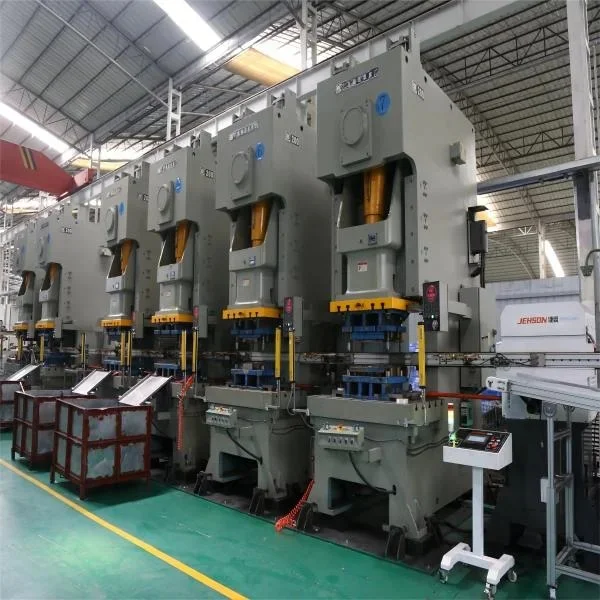At Ganlong-Flying Industrial, we understand that selecting the appropriate metal stamping process is crucial for achieving optimal results in your manufacturing endeavors. Metal stamping, a versatile technique that utilizes presses and dies to transform sheet metal into desired shapes, offers a range of approaches to suit different project requirements. This guide explores the key factors to consider when choosing the right metal stamping process for your specific application.

Understanding Metal Stamping
Metal stamping is a forming process where external forces are applied to sheet metal, strips, pipes, and profiles using a press and mold. This results in plastic deformation or separation, allowing for the creation of workpieces with specific shapes and sizes. Stamping and forging fall under plastic processing, with stamping blanks primarily consisting of hot-rolled and cold-rolled steel plates and strips. This process is integral to various industries, from automotive to household appliances, producing components like car bodies, appliance parts, and electronic components.
Ganlong-Flying Industrial offers parts for the electronics, automotive, and various other industries.
Key Factors to Consider
Part Complexity and Design
Simple vs. Complex Geometries: For parts with simpler geometries, basic stamping operations like blanking, piercing, and bending may suffice. However, for more intricate designs, processes like deep drawing or fine blanking might be necessary.
Features and Tolerances: Consider the required features, such as holes, ribs, or flanges, and the necessary tolerances. Processes like fine blanking offer superior precision and smoother edges compared to conventional stamping.
Production Volume
Low vs. High Volume: The production volume significantly influences the choice of stamping process. Progressive die stamping is ideal for high-volume production due to its efficiency and automation capabilities. For lower volumes, processes like transfer die stamping or using simple dies may be more cost-effective.
Material Properties
Material Type and Thickness: The material's properties, such as its formability and tensile strength, and its thickness, play a crucial role. Hot stamping is suitable for materials with high deformation resistance and poor plasticity, while cold stamping is commonly used for thin plates.
Material Cost: Stamping generally does not generate chips or debris, consumes less material, and does not require other heating equipment. Therefore, it is a material saving and energy-saving processing method, and the cost of stamping parts is relatively low.
Cost and Budget
Tooling Costs: The complexity of the tooling and dies directly impacts the overall cost. Progressive dies, while efficient for high volumes, require significant upfront investment.
Production Costs: Consider the cost per part, which decreases with higher production volumes, especially with automated processes like progressive die stamping.
Secondary Operations
Need for Additional Processes: Determine if secondary operations like forming, piercing, or in-die staking are required. Progressive stamping can incorporate multiple operations within a single die, reducing the need for additional steps.
Stamping Processes Overview
Hot vs. Cold Stamping
Hot Stamping: Involves heating the metal to make it more pliable. This is suitable for materials with high deformation resistance and poor plasticity.
Cold Stamping: Performed at room temperature, commonly used for thin plates.
Progressive Die Stamping
High Efficiency: Ideal for mass production, this process allows for the efficient creation of complex parts in a single, continuous operation.
Multiple Operations: A strip of coiled metal advances through a series of stations within the die, with each station performing a single step.
Fine Blanking
Precision and Smoothness: This method produces parts with smooth, clean edges and maintains the flatness of the material.
Single-Stroke Process: Individual pieces are created in a single stroke of the press.
Deep Drawing
Complex Shapes: Uses a series of dies to incrementally stretch sheet metal into the desired shape.
Uniform Wall Thickness: Capable of creating parts with high dimensional accuracy and a smooth finish.
Other Considerations
Capabilities The right stamping company will provide versatile and precise metal stamping solutions.
Customization: Equipment should provide a high degree of customization and be adaptable to meet specific product requirements.
Volume Demands: Progressive dies operate faster than compound dies by reducing material handling costs, thus making them more suitable for mass production.
Material Expertise: Stamping capabilities extend to a broad range of materials.
Partnering with Ganlong-Flying Industrial
Choosing the right metal stamping process requires careful consideration of various factors, including part complexity, production volume, material properties, and budget. At Ganlong-Flying Industrial, we leverage our expertise and state-of-the-art equipment to provide tailored stamping solutions that meet your specific needs. Contact us today to discuss your project and discover how we can help you achieve superior results.



